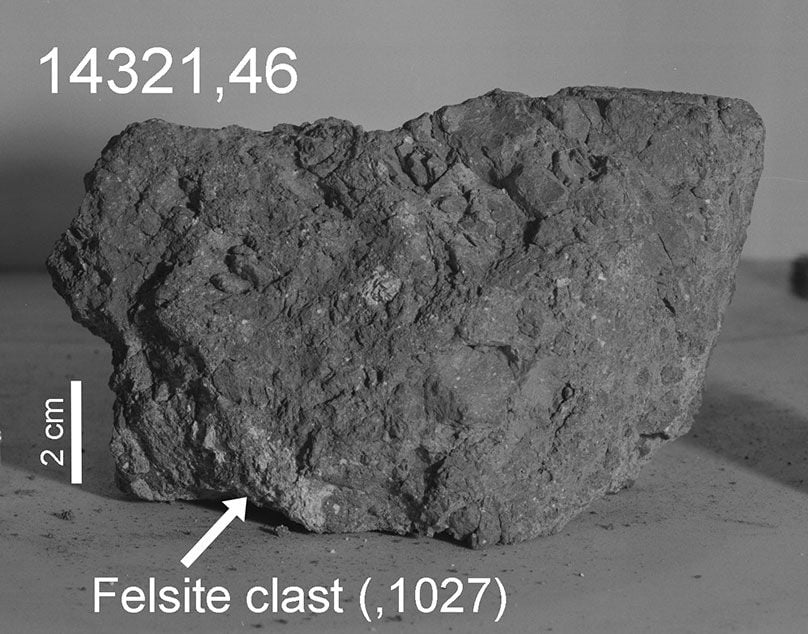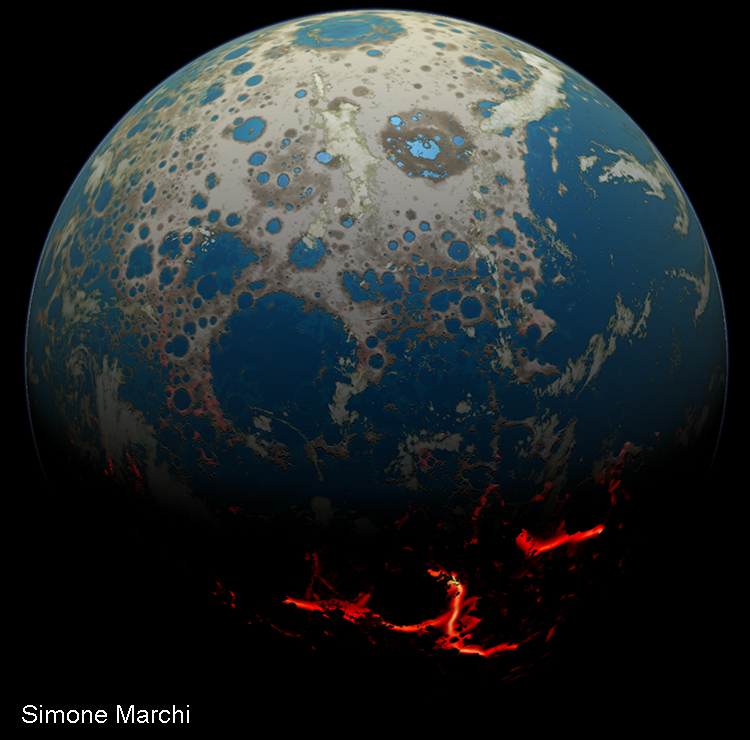Earth’s Oldest Known Rock May Have Been Found on the Moon
Alan Shepard, the first American astronaut in space, collected the rock sample during Apollo 14
:focal(518x213:519x214)/https://tf-cmsv2-smithsonianmag-media.s3.amazonaws.com/filer/bd/d4/bdd44730-b47e-49e4-bc4c-fe3ba660f8be/820_as14-68-9405_1600.jpg)
In February 1971, Apollo 14 landed on the moon carrying astronauts Alan Shepard and Edgar Mitchell to the lunar surface while Stuart Roosa circled above in the Command Module. The mission was the third to land on the moon, touching down near Cone Crater. The two moonwalkers took photos of the lunar surface, conducted geologic and seismic studies, and Al Shepard, the first American in space, affixed a six iron golf clubhead to a lunar excavation tool and hit two golf balls into the weak gravity of the moon.
The crew also brought back almost 100 pounds of lunar samples. Nearly five decades later, one of the rocks in the Apollo 14 haul, a 20-pound, basketball-sized chunk of lunar material officially known as 14321, has recaptured the attention of planetary scientists. According to a recent study in Earth and Planetary Science Letters, a large portion of 14321 may have formed not on the moon, but on Earth some four billion years ago, which would make it the oldest known rock from our planet.
The rock 14321 is a breccia, or a conglomeration of rocks and minerals all cemented together in a mosaic-like pattern. Most of the rock fragments, or clasts, are dark in color, according to Michael Greshko at National Geographic, resembling lunar material. But one part of 14321 is brighter than the rest, similar to igneous rocks such as granite found in abundance on Earth.

A team of lunar scientists, led by the Center for Lunar Science and Exploration (CLSE), the Universities Space Research Association (USRA) and the Lunar and Planetary Institute (LPI), sampled the brighter clast of 14321 to analyze the minerals of the rock and attempt to determine its origin. The researchers examined zircon, an incredibly resilient mineral, as well as feldspar and quartz from the rock sample, according to Mike Wall at Space.com. They found that the bright piece of 14321 must have formed in relatively cool, oxygen-rich magmas at high pressures.
On the moon, these conditions are rare. It’s possible that the bright part of 14321 formed more than 100 miles below the lunar surface in a water-rich pocket of magma, according to National Geographic. But the impact that created Cone Crater—initially thought to have excavated rock 14321 from beneath the lunar surface—only pulled material up from about 45 miles down.
A more likely explanation, according to the study, is that the clast of 14321 formed on Earth 4 to 4.1 billion years ago, about 12 miles below the terrestrial surface where temperatures, pressures and oxygen levels match the formation conditions of the rock. Early Earth was repeatedly pummeled by space rocks, such as asteroids and meteorites, that pushed 14321 closer and closer to the surface over time, until a collision sent it hurling toward the moon where it was buried once more and partially melted. Then another impact about 26 million years ago pushed it to the lunar surface where it sat until Al Shepard walked by and picked it up.
“It is an extraordinary find that helps paint a better picture of early Earth and the bombardment that modified our planet during the dawn of life,” planetary scientist David Kring, who is the principal investigator at CLSE, says in a press release.

For a period of about 300 million years, between 3.8 and 4.1 billion years ago, the early Earth and moon were peppered with asteroid impacts, known as the Late Heavy Bombardment. During this time of the Hadean eon—the first geological eon in Earth’s history—Earth and the moon are known to have traded a significant amount of material. As impactors slammed into Earth’s surface, rocks and debris were catapulted into space, some of which rained down on the early moon, which was three times closer than it is today.
As Earth and the moon cooled into the worlds we know today, rock 14321 was apparently flung to the moon, thereafter preserved in the airless, undisturbed, geologically inert lunar environment. While some zircon minerals discovered on Earth, in Western Australia’s Jack Hills, may be as old as 4.4 billion years old, these are “individual, contextless crystals,” lead author of the new study Jeremy Bellucci, a geologist at the Swedish Museum of Natural History, tells National Geographic.
If part of lunar rock 14321 indeed formed on Earth, it represents the oldest known rock from our planet, making the lunar voyage some four billion years before Al Shepard, who happened to pick it up between golf swings.
/https://tf-cmsv2-smithsonianmag-media.s3.amazonaws.com/accounts/headshot/bennett.jpg)
/https://tf-cmsv2-smithsonianmag-media.s3.amazonaws.com/accounts/headshot/bennett.jpg)